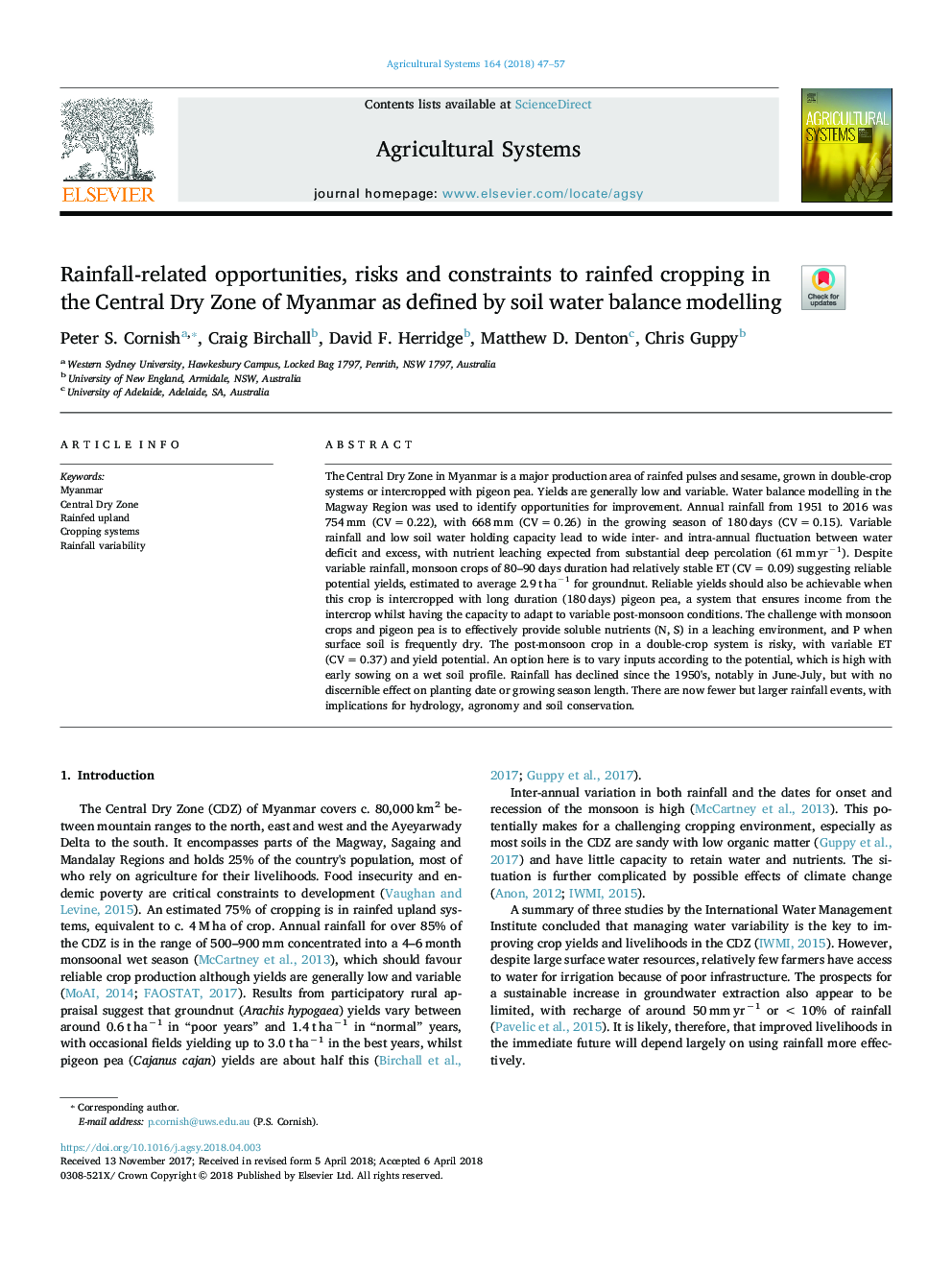| کد مقاله | کد نشریه | سال انتشار | مقاله انگلیسی | نسخه تمام متن |
|---|---|---|---|---|
| 8874960 | 1623206 | 2018 | 11 صفحه PDF | دانلود رایگان |
عنوان انگلیسی مقاله ISI
Rainfall-related opportunities, risks and constraints to rainfed cropping in the Central Dry Zone of Myanmar as defined by soil water balance modelling
ترجمه فارسی عنوان
فرصت های شغلی، خطرات و محدودیت های مربوط به برداشت بارانی در منطقه خشکی میانمار به عنوان تعریف مدل تعادل آب
دانلود مقاله + سفارش ترجمه
دانلود مقاله ISI انگلیسی
رایگان برای ایرانیان
کلمات کلیدی
میانمار، منطقه مرکزی خشک، سرزمین های سرپوشیده سیستم های برداشت تغییرات بارش،
موضوعات مرتبط
علوم زیستی و بیوفناوری
علوم کشاورزی و بیولوژیک
علوم کشاورزی و بیولوژیک (عمومی)
چکیده انگلیسی
The Central Dry Zone in Myanmar is a major production area of rainfed pulses and sesame, grown in double-crop systems or intercropped with pigeon pea. Yields are generally low and variable. Water balance modelling in the Magway Region was used to identify opportunities for improvement. Annual rainfall from 1951 to 2016 was 754â¯mm (CVâ¯=â¯0.22), with 668â¯mm (CVâ¯=â¯0.26) in the growing season of 180â¯days (CVâ¯=â¯0.15). Variable rainfall and low soil water holding capacity lead to wide inter- and intra-annual fluctuation between water deficit and excess, with nutrient leaching expected from substantial deep percolation (61â¯mmâ¯yrâ1). Despite variable rainfall, monsoon crops of 80-90â¯days duration had relatively stable ET (CVâ¯=â¯0.09) suggesting reliable potential yields, estimated to average 2.9â¯tâ¯haâ1 for groundnut. Reliable yields should also be achievable when this crop is intercropped with long duration (180â¯days) pigeon pea, a system that ensures income from the intercrop whilst having the capacity to adapt to variable post-monsoon conditions. The challenge with monsoon crops and pigeon pea is to effectively provide soluble nutrients (N, S) in a leaching environment, and P when surface soil is frequently dry. The post-monsoon crop in a double-crop system is risky, with variable ET (CVâ¯=â¯0.37) and yield potential. An option here is to vary inputs according to the potential, which is high with early sowing on a wet soil profile. Rainfall has declined since the 1950's, notably in June-July, but with no discernible effect on planting date or growing season length. There are now fewer but larger rainfall events, with implications for hydrology, agronomy and soil conservation.
ناشر
Database: Elsevier - ScienceDirect (ساینس دایرکت)
Journal: Agricultural Systems - Volume 164, July 2018, Pages 47-57
Journal: Agricultural Systems - Volume 164, July 2018, Pages 47-57
نویسندگان
Peter S. Cornish, Craig Birchall, David F. Herridge, Matthew D. Denton, Chris Guppy,
